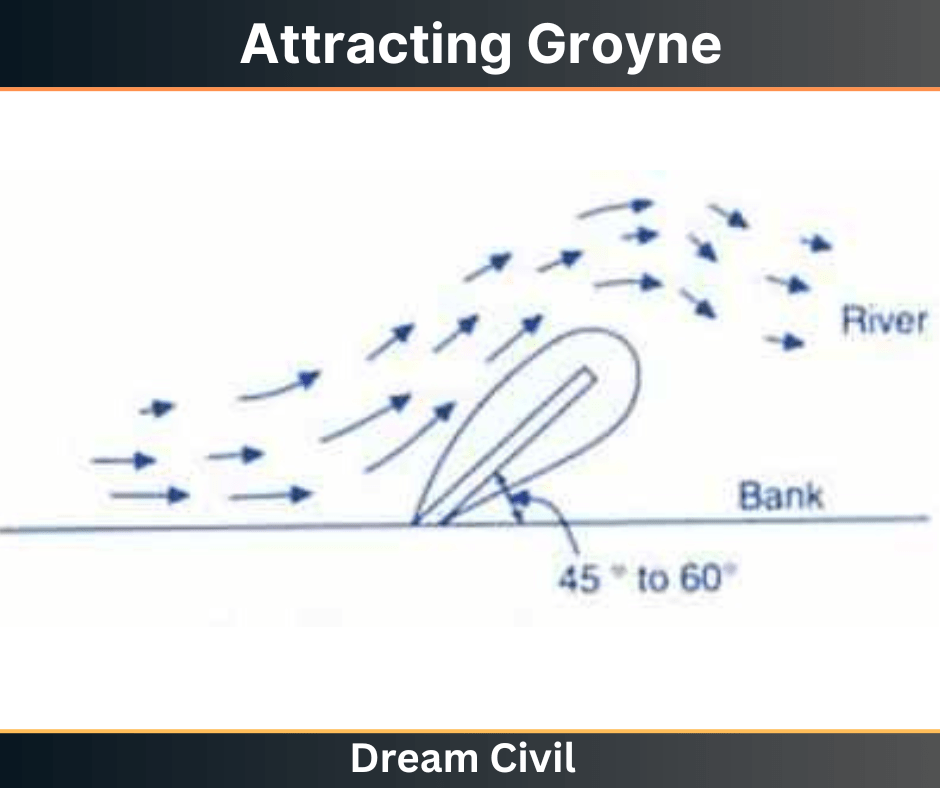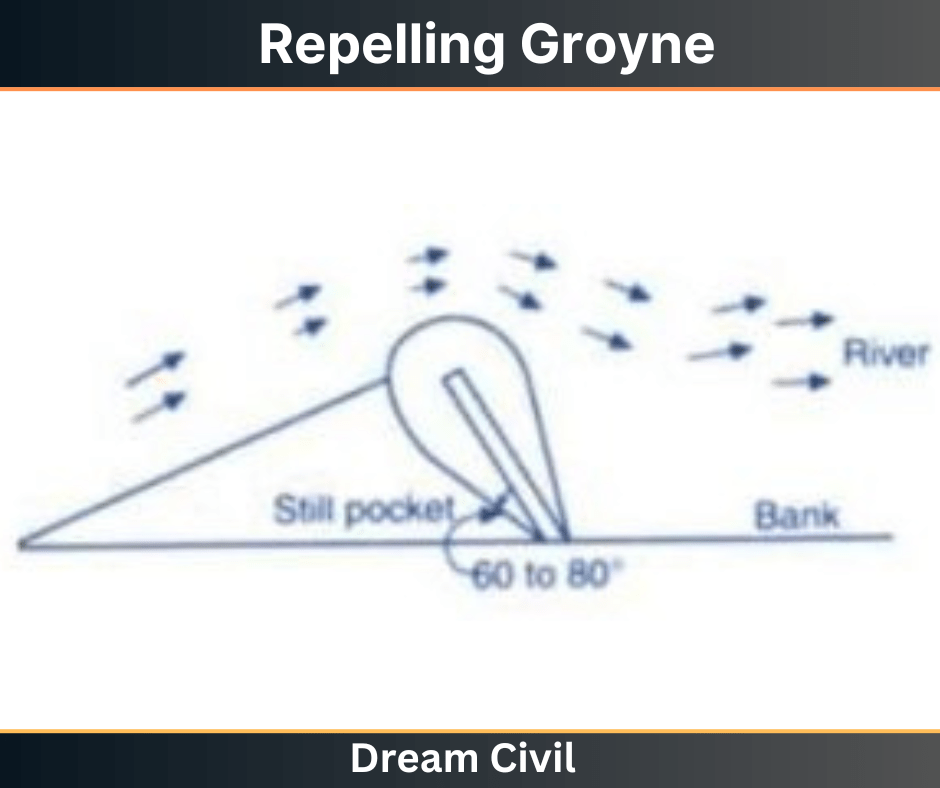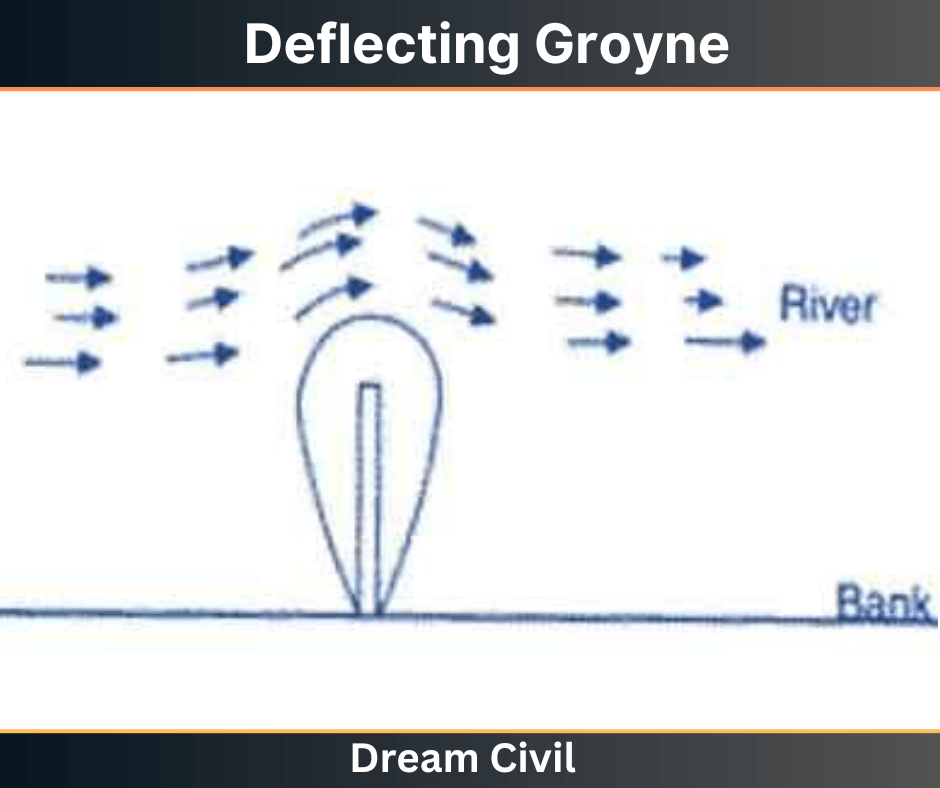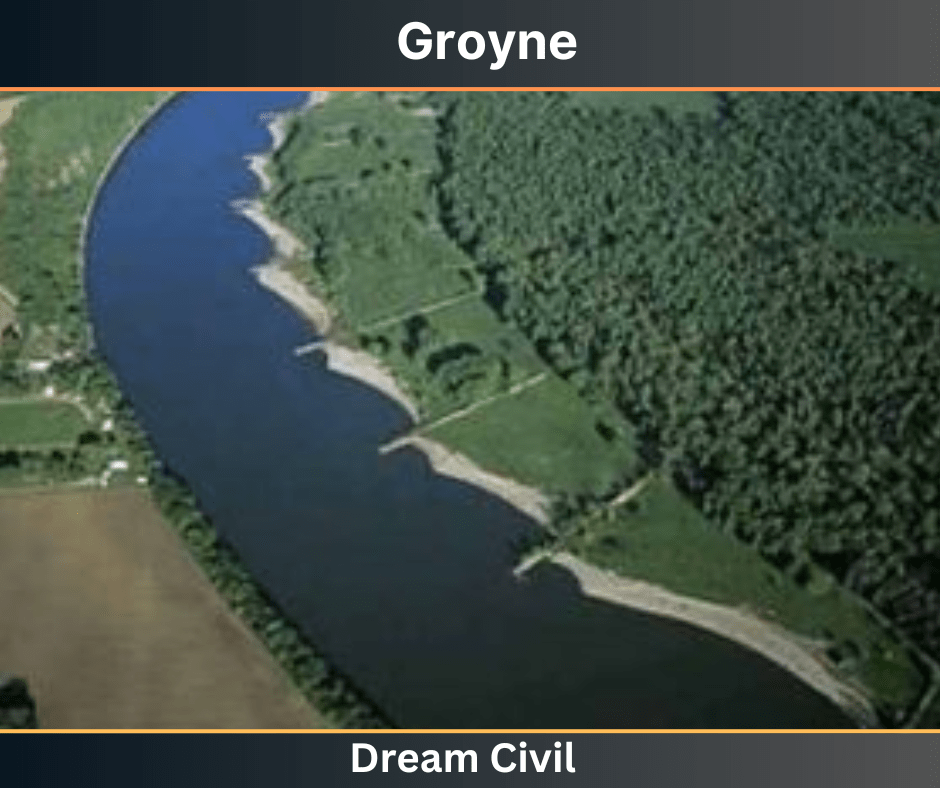Table of Contents
The function of groynes is similar to that of the spur. But these are impervious permanent structures constructed on the curve of a river to protect the river bank from erosion.
They extend from the bank towards the bed by making an angle of 46º to 75º with the bank.
The angle may be towards the upstream or downstream. Sometimes, it is made perpendicular to the river hank. These are constructed with rubble masonry in the trapezoidal section and the surface is finished with stone pitching or concrete blocks.
• The stone pitching or the concrete blocks are set with rich cement mortar.
• The length of the groyne depends on the width and nature of the river.
• The ae top width varies from 3 m to 4 m. The side slope may be 1½ :1 or 2:1.
• The groynes are provided in series throughout the affected length of the river hank.
• The spacing between the adjacent groynes is generally kept as 2L, where L is the length of the groyne.
• These are recommended for the river where the permanent solution of erosion control is extremely necessary.
The groynes may be designated as follows:
a. Attracting Groyne
The groyne which is constructed obliquely to the bank by making an angle of 60º to 70º towards the downstream is known as attracting groyne, where the flow of water is attracted towards the bank, and the velocity of flow is reduced to such an extent that it cannot cause any erosion to the bank.
However, a bank protected by stone pitching is provided for safety.

b. Repelling Groyne
A groyne that is aligned upstream at an angle of 60º to 75º with the river bank is known as the repelling groyne.
A still water pocket is formed upstream where silting takes place. Here, bank protection is not necessary because the flow of water does not touch the bank and there is no effect of erosion on the bank. But still, boulder pitching should be provided for safety.

c. Deflecting Groyne
The groyne which is constructed perpendicular to the river bank is known as deflecting groyne. Here the flow of water is deflected from the bank by the perpendicular obstruction i.e. groyne.
The flow of water follows an undulating path just outside the head of the groyne. An eddy current is formed on the upstream side of the groyne. This eddy current will not affect the river bank. But the bank protection is provided for safety.

d. Sediment Groynes
Sediment groynes are built when there is a considerable quantity of sediments carried by the river water.
These decrease the stream velocity and permit the sediments to deposit. They do not repel or deflect the flow.
Generally, permeable groynes are utilized as sediment groynes.

A. References1. Content Filter & Authenticity Checking Team, Dream Civil International (Our team checks every content & detail to maintain quality.) |
Read Also: Types of Sand

